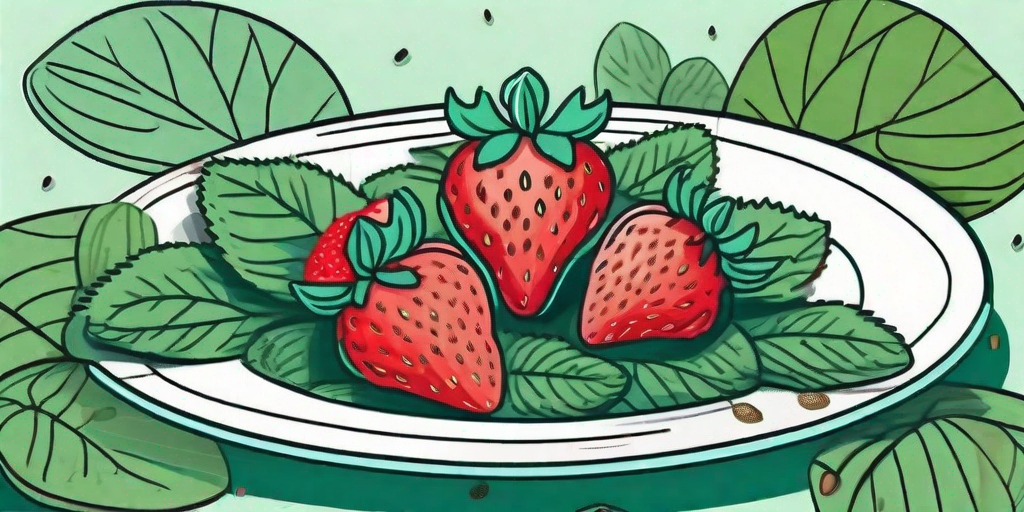
Strawberries, the ruby-red jewels of the garden, are a favorite among gardeners and foodies alike. But have you ever wondered how you can take these sweet treats from your garden to your plate? Or perhaps, how to save those tiny seeds for future strawberry harvests? Well, buckle up, because we're about to embark on a journey of discovery that will turn you into a strawberry-harvesting pro!
The Strawberry Life Cycle: A Brief Overview
Before we dive into the nitty-gritty of harvesting and saving strawberry seeds, let's take a moment to appreciate the life cycle of this wonderful fruit. Understanding the strawberry life cycle can help you plan your gardening activities better and ensure a bountiful harvest.
Strawberries are perennial plants, meaning they come back year after year. They start their life as a tiny seed, sprout into a plant, flower, and finally bear fruit. The fruiting stage is when we get to enjoy those juicy strawberries. But remember, the life cycle doesn't end there. The plant continues to produce runners, which are extensions of the plant that can grow into new strawberry plants. It's like a never-ending strawberry party!
From Seed to Sprout
Strawberry seeds require a period of cold stratification to germinate. This means they need to be exposed to cold temperatures for a few weeks. This can be achieved by sowing the seeds in a pot and placing it in the refrigerator. After this cold treatment, the seeds are ready to sprout and start their journey to becoming a full-fledged strawberry plant.
Once the seeds sprout, they need plenty of sunlight and water to grow. The seedlings will develop leaves and roots, and eventually, they will be ready to be transplanted into your garden.
Flowering and Fruiting
After the strawberry plants are established in the garden, they will start to flower. These flowers will eventually turn into the strawberries we all know and love. But remember, not all flowers will turn into fruit. Some may fall off due to poor pollination or unfavorable weather conditions. So don't be disheartened if you see some flowers falling off. It's just part of the strawberry life cycle.
The fruiting stage is the most exciting part of the strawberry life cycle. This is when you get to harvest those juicy strawberries and enjoy them fresh from your garden. But how do you know when the strawberries are ready to be harvested? Well, that's a great question, and we'll answer it in the next section.
Harvesting Strawberries: Timing is Everything
Harvesting strawberries may seem like a no-brainer. You just pick them when they're red, right? Well, not quite. There's a bit more to it than that. The key to harvesting strawberries is timing. Pick them too early, and they'll be sour. Pick them too late, and they'll be overripe.
The perfect time to harvest strawberries is when they are fully red, but still firm to the touch. The caps should be bright green and fresh-looking. If you're unsure, taste one. If it's sweet and juicy, it's ready to be harvested.
How to Pick Strawberries
Picking strawberries is a delicate task. You don't want to bruise the fruit or damage the plant. The best way to pick strawberries is to hold the stem just above the berry, and gently twist it off. Avoid pulling the berry directly, as this can damage the plant.
Once you've picked the strawberries, don't wash them right away. Strawberries absorb water quickly, which can make them mushy. Instead, store them in a cool place and wash them just before you're ready to eat them.
Saving Strawberry Seeds: The Gift That Keeps on Giving
Now that you've enjoyed your homegrown strawberries, why not save some seeds for next year's crop? Saving strawberry seeds is a great way to ensure a continuous supply of strawberries, and it's also a fun gardening activity.
How to Save Strawberry Seeds
Saving strawberry seeds is a simple process, but it does require some patience. Here's a step-by-step guide:
- Pick a ripe strawberry.
- Using a knife, scrape off the seeds gently.
- Place the seeds on a paper towel and let them dry for a few days.
- Once the seeds are dry, store them in a cool, dry place until you're ready to plant them.
Remember, not all seeds will germinate, so it's a good idea to save more seeds than you plan to plant.
FAQs
When is the best time to plant strawberry seeds?
The best time to plant strawberry seeds is in early spring, after the last frost. This gives the plants plenty of time to establish themselves before the hot summer months.
How long does it take for a strawberry plant to bear fruit?
Strawberry plants typically start bearing fruit in their second year. However, some varieties may bear fruit in their first year.
Can I grow strawberries from store-bought strawberries?
Yes, you can grow strawberries from store-bought strawberries. However, keep in mind that these strawberries may have been treated with chemicals that can inhibit seed germination.
Conclusion
From understanding the strawberry life cycle to harvesting the fruit and saving the seeds, we've covered everything you need to know to become a strawberry-harvesting pro. So go ahead, give it a try. Your taste buds will thank you!











